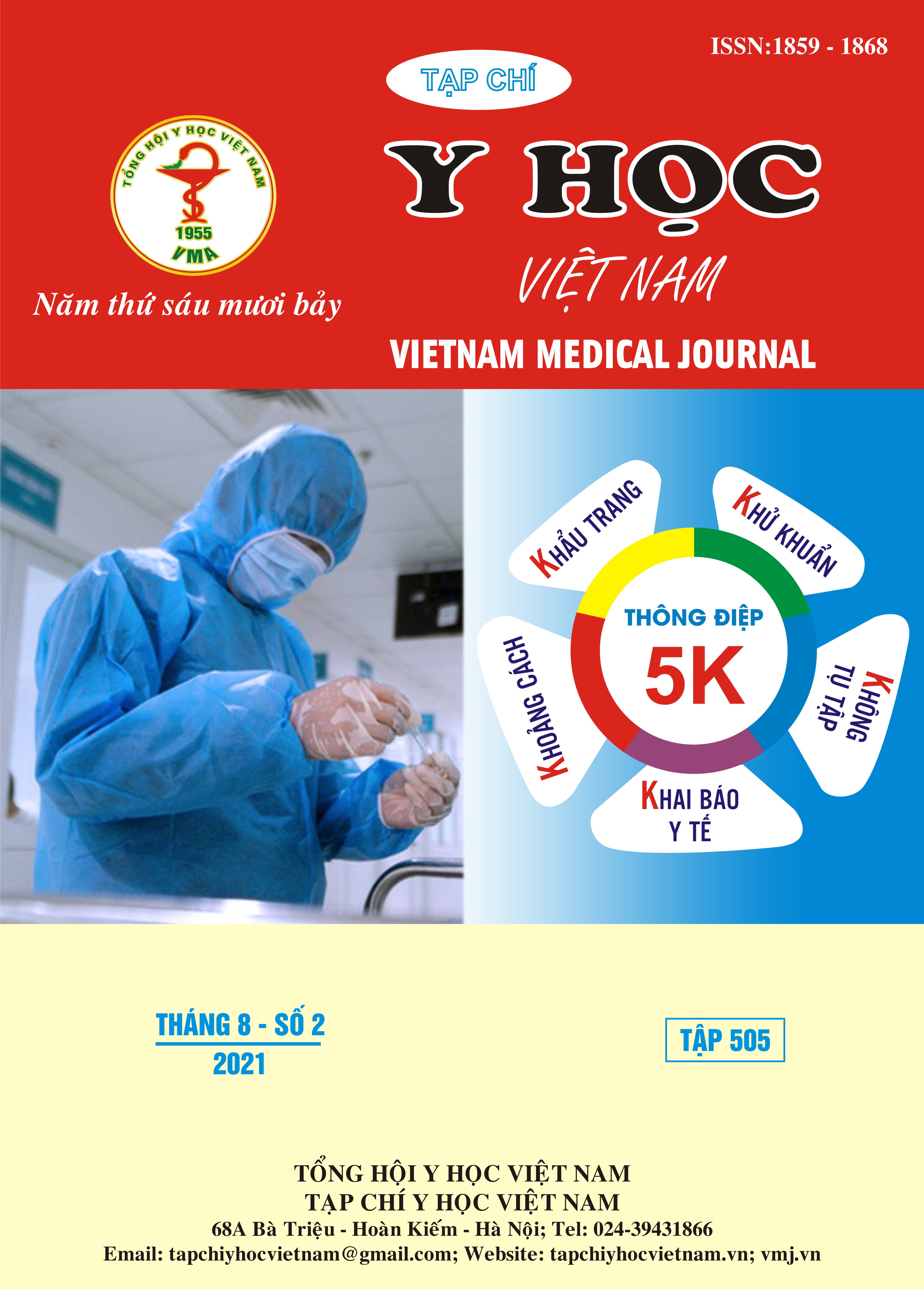PELVIC ARTERIAL INJURIES AND YOUNG – BURGESS CLASSIFICATION ON CT SCAN IN PELVIC TRAUMA
Main Article Content
Abstract
Objectives: This study was conducted to describe some imaging features of arterial injury with Young – Burgess classification on CT scan in pelvic trauma. Materials and methods: From 7/2019 to 11/2020, 30 patients with pelvic fracture were diagnosed with arterial injury on CT scan and treated with DSA at Viet Duc Hospital. The characteristics of the Young - Burgess classification in pelvic fracture, location and morphology of arterial lesions on CT scan are described. Results: The most common form of pelvic injury was lateral compression (LC) in 28 patients (50% LC-II at most). There were 17 patients with lesions at 1 location and 13 patients with lesions from 2 or more locations, in which it was mainly seen in the group of patients with unstable pelvic fracture with the rate of 76,9%. Arterial injury in the study was mainly active bleeding accounting for 85,4%, encountered in most types of pelvic rupture. The number of patients with unstable hemodynamic was 19/30 patients (63.3%). In the group of LC injuries, the average volume of red blood cells transfused before the intervention was 5 units, the proportion of patients with unstable hemodynamic was 60.7%. Conclusion: Both stable and unstable pelvic fractures can cause arterial damage, however, unstable pelvis fractures had a higher rate of injury from 2 vessel sites. LC injuries were most common and were most commonly associated with lesions of the anterior branches of the internal iliac artery. Active bleeding was more common than pseudoaneurysm.
Article Details
Keywords
vỡ khung chậu, tổn thương động mạch, cắt lớp vi tính
References
2. Raniga SB, Mittal AK, Bernstein M, Skalski MR, Al-Hadidi AM. Multidetector CT in Vascular Injuries Resulting from Pelvic Fractures: A Primer for Diagnostic Radiologists. RadioGraphics. 2019;39(7):2111-2129. doi:10.1148/rg.2019190062
3. Fu C-Y, Hsieh C-H, Wu S-C, et al. Anterior-posterior compression pelvic fracture increases the probability of requirement of bilateral embolization. The American Journal of Emergency Medicine. 2013;31(1):42-49. doi:10.1016/j.ajem.2012.05.026
4. Lee MJ, Wright A, Cline M, Mazza MB, Alves T, Chong S. Pelvic Fractures and Associated Genitourinary and Vascular Injuries: A Multisystem Review of Pelvic Trauma. American Journal of Roentgenology. 2019;213(6):1297-1306. doi:10.2214/AJR.18.21050
5. Metz CM, Hak DJ, Goulet JA, Williams D. Pelvic fracture patterns and their corresponding angiographic sources of hemorrhage. Orthopedic Clinics of North America. 2004;35(4):431-437. doi:10.1016/j.ocl.2004.06.002
6. Eastridge BJ, Starr A, Minei JP, O???Keefe GE. The Importance of Fracture Pattern in Guiding Therapeutic Decision-Making in Patients with Hemorrhagic Shock and Pelvic Ring Disruptions: The Journal of Trauma: Injury, Infection, and Critical Care. 2002; 53(3): 446-451. doi: 10.1097/00005373-200209000-00009
7. Hagiwara A, Minakawa K, Fukushima H, Murata A, Masuda H, Shimazaki S. Predictors of Death in Patients with Life-Threatening Pelvic Hemorrhage after Successful Transcatheter Arterial Embolization: The Journal of Trauma: Injury, Infection, and Critical Care. 2003; 55(4):696-703. doi:10.1097/01.TA.0000053384.85091.C6
8. Nguyễn Ngọc Đức. Đặc điểm hình ảnh và hiệu quả nút mạch trong kiểm soát chảy máu do vỡ khung chậu (2016).
9. Sarin EL, Moore JB, Moore EE, et al. Pelvic Fracture Pattern Does Not Always Predict the Need for Urgent Embolization: The Journal of Trauma: Injury, Infection, and Critical Care. 2005;58(5):973-977. doi:10.1097/01.TA.0000171985.33322.b4


